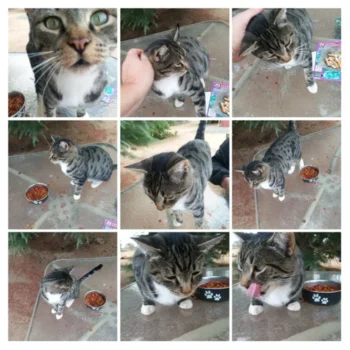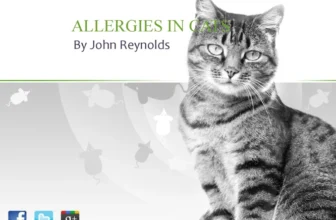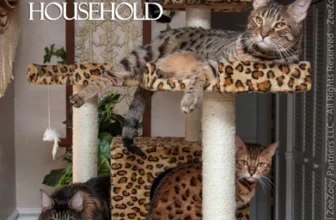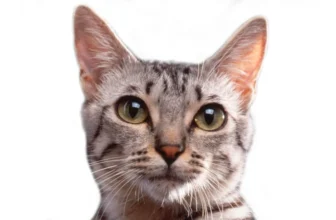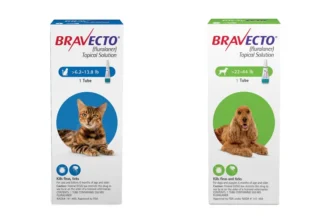As a cat lover, you want to keep your furry friend healthy and happy. However, California Spangled cats, just like any other breed, are prone to a variety of health issues that can be potentially harmful. This is where vaccinations come in to play a crucial role in preventing illnesses. But, with so many different types of vaccines, how often should they get them, and which ones are the most important? In this article, we dive into the world of vaccination schedules and explore the role they play in preserving the health of your beloved California Spangled cat.
Why Vaccination is Essential for California Spangled Cats
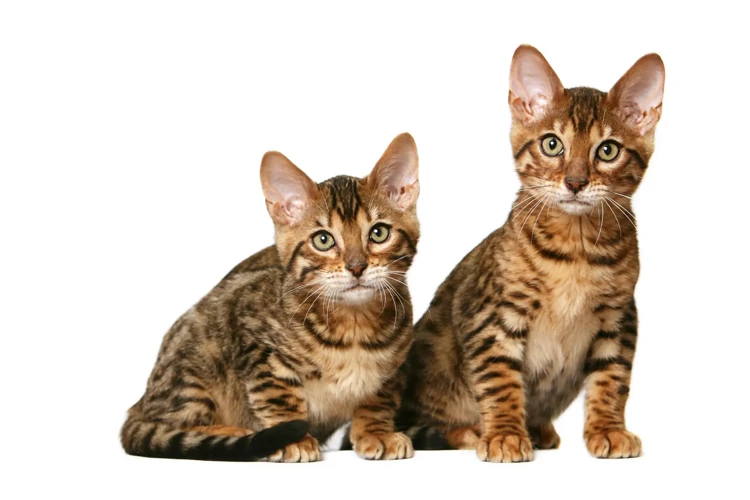
Ensuring the good health of your California Spangled cat should be a top priority. These beautiful felines are known for their energy, agility, and playful behavior. However, just like any other pet, they are also susceptible to various health issues. One of the most effective ways to prevent diseases from affecting your furry friend is through vaccination. Vaccinations can protect your California Spangled cat from numerous illnesses and health problems, making them an essential aspect of feline care. In this article, we will discuss why this is so important and provide an overview of the various vaccination schedules available for California Spangled cats. For more information on California Spangled cat vaccinations, please visit our comprehensive guide.
What are Vaccinations and How do They Work?
Vaccinations are one of the most essential components of preventive healthcare measures that pet owners can take for their beloved California Spangled Cats. Vaccines essentially work by mimicking the natural infection process that a cat’s body goes through when it is exposed to a particular virus or bacterium in the environment. The difference is that a vaccine typically uses either a weakened or inactivated form of the virus or bacterium, which safely stimulates the cat’s immune system to create a defense mechanism against the targeted disease.
When a vaccine is administered, the immune system of the cat identifies the virus or bacterium and begins to create antibodies against it. These antibodies are the protein molecules that circulate in the bloodstream and fight off the invading infectious agent, preventing the cat from developing the disease. This process takes some time, often a few weeks after the initial vaccination, and this is why booster shots are necessary to strengthen the immunity over the following months and years.
There are various types of vaccines that can be used in California Spangled Cats, including inactivated vaccines, subunit vaccines, and live vaccines. However, the vaccine type will depend on the specific disease that is being targeted, the age and health of the cat, and the overall vaccination schedule that the veterinarian recommends.
It is important to note that vaccines are not a guarantee of complete protection from diseases. However, by keeping up with a regular vaccination schedule for their California Spangled Cats, pet owners can significantly reduce the risk of their cats contracting and spreading infectious diseases. To learn more about the common vaccines used in California Spangled Cat vaccination schedules and the recommended vaccine administration routine, visit our page on CA Spangled Cat Vaccination Schedule.
What are the Key Vaccines for California Spangled Cats?
Vaccines play a significant role in the preventive health of California Spangled Cats. California Spangled Cat vaccines are designed to help protect cats against common infectious diseases that can cause severe health issues. By receiving proper vaccinations, California Spangled Cats are less likely to contract infectious diseases, and it also prevents the spread of diseases among other cats and humans.
The key vaccines used in California Spangled Cat vaccination schedules are:
| Vaccine | Disease |
|---|---|
| Panleukopenia vaccine (FVRCP) | Feline Panleukopenia (Feline Distemper) |
| Rhinotracheitis (FVRCP) | Feline Rhinotracheitis (Feline Herpesvirus-1) |
| Calicivirus vaccine (FVRCP) | Feline Calicivirus (FCV) |
| Chlamydia vaccine (FVRCP) | Chlamydiosis |
| Rabies vaccine | Rabies |
| FeLV vaccine | Feline Leukemia Virus (FeLV) |
| FIV vaccine | Feline Immunodeficiency Virus (FIV) |
Feline Panleukopenia, Feline Rhinotracheitis, and Feline Calicivirus are frequently grouped together and given in a single vaccination known as the FVRCP vaccine. The FVRCP vaccine helps protect against three respiratory infections and feline distemper. Rabies is another essential vaccine that is required by law in most states.
A vaccination for Feline Leukemia Virus (FeLV) is also recommended for cats that have a higher likelihood of exposure to the virus, such as those that go outdoors or live with cats that test positive for the virus. The Feline Immunodeficiency Virus (FIV) vaccine is not always recommended since it does not provide complete protection, and the tests used to diagnose the virus can’t differentiate between vaccinated cats and actual infections.
California Spangled Cat vaccination schedules can vary depending on your cat’s lifestyle, age, and geographic location. In the next section, we will discuss how frequently vaccinations should be administered.
Click here to read about the common vaccines used in California Spangled Cat vaccination schedules.
How Frequent Should Vaccinations be Administered?
Vaccinations are an essential part of keeping California Spangled Cats healthy and free from infectious diseases. Once your feline friend receives their initial vaccinations, it is important to establish an appropriate vaccination schedule to maintain their immunity levels.
The frequency of vaccinations depends on the vaccine type and the cat’s age:
| Vaccine Type | Age of Cat | Vaccination Frequency |
|---|---|---|
| Feline Panleukopenia, Feline Rhinotracheitis, and Feline Calicivirus | 6-8 weeks | Boosters every 3-4 weeks until 16 weeks, then 1 year later, then every 3 years |
| Chlamydiosis | 12 weeks | Repeat in 3-4 weeks, then annually |
| Rabies | 12-16 weeks | Yearly or every 3 years (depending on vaccine type) |
| Feline Leukemia Virus (FeLV) | 8-12 weeks | Boosters every 3-4 weeks until 16 weeks, yearly for outdoor cats, not necessary for indoor-only cats |
| Feline Immunodeficiency Virus (FIV) | 8-12 weeks | Boosters every 3-4 weeks until 16 weeks, then yearly for high-risk cats |
It is essential to follow the vaccination schedule recommended by your veterinarian to ensure your cat’s immunity levels remain high, protecting them from infectious diseases. To learn more about California Spangled Cat vaccinations, visit our comprehensive guide on CA Spangled Cat Vaccinations.
Common Health Issues of California Spangled Cats
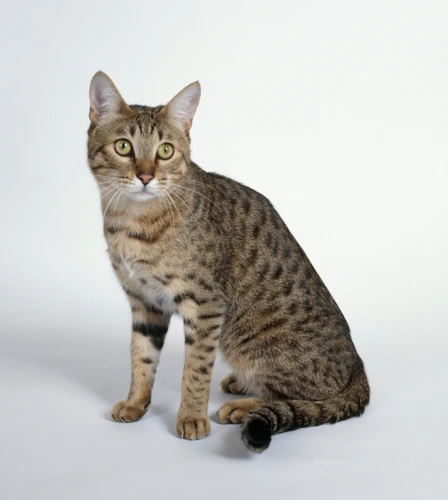
As much as we love our furry friends, they are not immune to health issues. California Spangled Cats are no exception. It’s important to be aware of the common health problems that can affect these cats so that you can take prompt measures to prevent and treat them. In this section, we will explore some of the most prevalent health issues that California Spangled Cats face and what you can do to ensure your feline friend stays healthy and happy. So, let’s dive in and learn more about these health concerns.
Feline Panleukopenia (Feline Distemper)
Feline Panleukopenia, also known as Feline Distemper, is a viral disease that affects cats of all ages. It is caused by the feline parvovirus and can spread easily through contact with infected saliva, feces, and urine. The virus can survive for long periods in the environment, making it particularly dangerous. Here is a table that summarizes important facts about Feline Panleukopenia:
| Cause: | Feline parvovirus |
| Symptoms: | Vomiting, diarrhea, fever, lethargy, dehydration, anemia, and sudden death |
| Treatment: | There is no cure for Feline Panleukopenia, but supportive care can help manage symptoms and reduce complications. This includes fluids to prevent dehydration, medication to control vomiting and diarrhea, and antibiotics to prevent secondary infections. |
| Prevention: | Vaccination is the best way to prevent Feline Panleukopenia. Kittens should receive their first vaccination at 6-8 weeks of age, with booster shots every 3-4 weeks until they are 16 weeks old. Adult cats should receive annual booster shots. |
The symptoms of Feline Panleukopenia can be severe and often lead to death, especially in young kittens with weak immune systems. The virus attacks rapidly dividing cells in the body, including those in the bone marrow, intestines, and lymphatic system. This can lead to severe diarrhea, vomiting, and dehydration. Anemia and a weakened immune system make affected cats more susceptible to secondary infections, which can be fatal.
Although there is no cure for Feline Panleukopenia, supportive care can help manage symptoms and reduce complications. This includes providing fluids to prevent dehydration, medications to control vomiting and diarrhea, and antibiotics to prevent secondary infections.
The most effective way to prevent Feline Panleukopenia is through vaccination. Kittens should receive their first vaccination at 6-8 weeks of age, with booster shots every 3-4 weeks until they are 16 weeks old. Adult cats should receive annual booster shots to maintain immunity. Keeping your cat indoors and away from infected cats can also help reduce the risk of infection.
Feline Panleukopenia is a serious viral disease that can be deadly for cats. Vaccination is crucial in preventing this disease and protecting your cat’s health. If you notice any symptoms of Feline Panleukopenia, it is important to seek veterinary care immediately to increase the chances of recovery.
Feline Rhinotracheitis (Feline Herpesvirus-1)
Feline Rhinotracheitis, also known as Feline Herpesvirus-1 (FHV-1), is a highly contagious respiratory infection in cats caused by the herpes virus. This virus is extremely common among cats and can cause severe health issues.
Transmission and Symptoms: FHV-1 spreads through direct contact with an infected cat or through contaminated objects such as food dishes or litter boxes. Symptoms may include sneezing, coughing, nasal discharge, fever, loss of appetite, and eye discharge. In severe cases, FHV-1 can cause pneumonia or even death.
Diagnosis and Treatment: Diagnosis is usually based on symptoms and a physical examination by a veterinarian. Treatment may include antiviral medication, antibiotics to treat secondary infections, and supportive care such as fluids and good nutrition. While there is no cure for FHV-1, early diagnosis and treatment can help reduce symptoms and prevent secondary infections.
Prevention: Vaccination is the best way to prevent FHV-1 in cats. The FVRCP vaccine, which is part of the core vaccines for cats, includes protection against FHV-1. Vaccinations should begin in kittens as early as six weeks of age and should be repeated every three to four weeks until they are around 16 weeks old. Adult cats should receive booster shots every one to three years, depending on their lifestyle and risk of exposure to the virus.
It is important to note that while vaccinated cats can still contract the virus, the vaccine can help reduce the severity and duration of the illness. It is also important to keep cats in a clean and sanitary environment to help prevent the spread of FHV-1 and other infectious diseases.
| Transmission | Symptoms | Diagnosis and Treatment | Prevention |
|---|---|---|---|
| FHV-1 spreads through direct contact with an infected cat or through contaminated objects such as food dishes or litter boxes. | Symptoms may include sneezing, coughing, nasal discharge, fever, loss of appetite, and eye discharge. In severe cases, FHV-1 can cause pneumonia or even death. | Diagnosis is usually based on symptoms and a physical examination by a veterinarian. Treatment may include antiviral medication, antibiotics to treat secondary infections, and supportive care such as fluids and good nutrition. | Vaccination is the best way to prevent FHV-1 in cats. The FVRCP vaccine, which is part of the core vaccines for cats, includes protection against FHV-1. Adult cats should receive booster shots every one to three years. |
Feline Calicivirus (FCV)
Feline Calicivirus (FCV) is a highly contagious viral infection that affects the respiratory system of California Spangled Cats. It is primarily spread through direct contact with infected cats and their bodily fluids. The virus appears to affect younger cats more severely than adult cats, and outdoor cats tend to be at a higher risk of contracting it.
Symptoms of FCV include sneezing, nasal discharge, mouth and tongue ulcers, fever, and loss of appetite. While the majority of cats recover from the virus, severe cases can lead to pneumonia, chronic gingivitis, and even death. Due to the severity of the symptoms and risks associated with FCV, it is important to ensure that California Spangled Cats receive proper vaccination.
The FCV Vaccine
The FCV vaccine is typically administered in combination with other core vaccines. It is highly effective in preventing the spread and severity of the virus. The vaccine works by priming the immune system to produce protective antibodies that neutralize the virus upon exposure.
Vaccination Schedule for FCV
Vaccination against FCV should begin at an early age, typically around 6-8 weeks old. Booster shots will be required about every 3-4 weeks until the kitten reaches 16 weeks of age. After that, adult cats should receive booster shots every 1-3 years depending on their lifestyle and individual risk of exposure to the virus.
It is important to note that even vaccinated cats can sometimes contract FCV, but the severity of the symptoms will typically be lessened and the recovery time will be faster. Additionally, vaccinated cats are less likely to transmit the virus to others.
Preventing FCV in California Spangled Cats
To prevent infection with FCV in California Spangled Cats, it is important to limit their exposure to other cats and their bodily fluids. Regular veterinary check-ups and vaccinations are also vital in preventing the spread of the virus.
Here is a table summarizing the key information about FCV vaccination for California Spangled Cats:
| Virus | Vaccine | Vaccination Schedule |
|---|---|---|
| Feline Calicivirus (FCV) | Combination vaccine | – Begin at 6-8 weeks old – Booster shots every 3-4 weeks until 16 weeks old – Booster shots every 1-3 years for adult cats |
Chlamydiosis
Chlamydiosis is a bacterial infection that affects California Spangled cats’ respiratory system and eyes. The infection is caused by Chlamydia felis, which can be spread through direct contact with an infected cat’s secretions or infected fleas. Symptoms of chlamydiosis in California Spangled cats include sneezing, coughing, runny eyes, and conjunctivitis, which can cause discomfort to your furry friend.
Prevention is the key to managing chlamydiosis in California Spangled cats. It can be prevented through vaccination and keeping your cat away from infected cats and fleas. The available vaccines in the market offer protection against Chlamydia felis, along with other respiratory diseases.
If you notice any symptoms of chlamydiosis in your California Spangled cat, take them to a veterinarian clinic for diagnosis and treatment. Your vet may prescribe antibiotics to help treat the infection and ease your cat’s discomfort. It is important to note that chlamydiosis can easily spread to other cats in your household; thus, immediate treatment is highly recommended.
It is also essential to practice good hygiene when caring for an infected cat. Wash your hands carefully before and after playing or handling your cat, and separate them from other cats in your household to prevent the spread of the disease.
Chlamydiosis can cause discomfort to your California Spangled cat but can be prevented through proper vaccination and good hygiene. If you suspect your cat has the infection, seek veterinarian care immediately to prevent its spread among other cats in your household.
Rabies
Rabies is a viral disease that can infect California Spangled Cats as well as other animals. It’s transmitted through the saliva of infected animals, most commonly through bites. Rabies is a highly dangerous disease that can be fatal if not treated promptly.
Symptoms of Rabies in Cats:
- Aggression and restlessness
- Increased vocalization
- Loss of appetite
- Fever
- Paralysis
- Seizures
If you notice any of these symptoms in your California Spangled Cat, it’s crucial to take them to a veterinarian immediately. The veterinarian will perform a physical examination and can detect if your cat has been infected with the rabies virus.
Vaccination is essential to prevent the spread of Rabies:
- The rabies vaccine is a subunit vaccine that contains inactive rabies virus particles, which help to stimulate the cat’s immune system to produce antibodies against the virus.
- It’s important to keep in mind that rabies vaccines only work when given before exposure to the virus. So, it’s always a good idea to keep your cat away from any wild animals that could potentially be carrying the disease.
- The recommended frequency of the rabies vaccine is every 1-3 years, depending on the vaccine type and your cat’s health.
- Keep records of your cat’s vaccination history to ensure that they are properly protected against rabies.
As a responsible pet owner, it’s essential to ensure your California Spangled Cat is vaccinated regularly against rabies. Doing so not only protects your cat’s health but also helps to prevent the spread of this deadly disease to other pets and humans.
Feline Leukemia Virus (FeLV)
Feline Leukemia Virus (FeLV) is a serious disease that can be lethal in cats. It is caused by a retrovirus that can compromise the immune system of infected cats and ultimately lead to the development of different forms of cancer. FeLV is primarily transmitted through direct contact with an infected cat, such as biting, grooming or sharing of litter boxes or food bowls.
There are several stages of FeLV, with some cats overcoming the virus without any symptoms, while others may experience progressive and life-threatening symptoms. If you own a California Spangled Cat, it is imperative to vaccinate them with FeLV vaccine, which can significantly reduce the risk of contracting the disease.
The FeLV vaccine is readily available and is often administered in combination with other vaccines during routine checkups. It is administered in a series of two doses, with the second shot given three to four weeks after the first. After the initial vaccination series, booster shots are given annually to maintain immunity to FeLV.
It’s important to note that even vaccinated cats can contract FeLV, however, the vaccine enables the immune system to better fight off the virus and significantly lowers the risk of severe medical issues. It is also important to limit contact between infected and uninfected cats, and to limit any behavior that may expose your California Spangled Cat to potential infection.
The following table shows the symptoms and possible outcomes of FeLV infection in cats:
| FeLV Symptoms and Outcomes | |
|---|---|
| Early Symptoms | – Lack of appetite – Slow weight loss – Mild diarrhea – Mild fever |
| Intermediate Symptoms | – Anemia – Chronic infections – Persistent fever – Cancers (lymphosarcoma, leukemia) |
| Terminal Symptoms | – Severe wasting – Extreme weakness – Difficulty breathing – Neurological disorders |
| Outcomes | – Some cats may recover from the virus – Some cats may become “carriers” of the virus without symptoms – Others may experience a rapid decline and die |
In Conclusion, vaccinating your California Spangled Cat against FeLV is an important step in ensuring their overall health and well-being. The FeLV vaccine is safe and highly effective in reducing the risk of contracting the virus. Additionally, it is crucial to take preventative measures to minimize the risk of infection, especially in multi-cat households or environments where cats come into contact with other cats, such as boarding facilities or shelters. By following a proper vaccination schedule, you can help your beloved companion live a happy and healthy life.
Feline Immunodeficiency Virus (FIV)
Feline Immunodeficiency Virus (FIV) is a retrovirus that affects California Spangled Cats. It is commonly transmitted through bites that occur during fights with other cats or through contact with infected blood. The virus attacks the immune system of the cat, leaving it vulnerable to infections and other diseases. Here are some important points to know about Feline Immunodeficiency Virus:
- Feline Immunodeficiency Virus is Common: FIV is a common virus that affects many cats in the United States. In fact, it is estimated that up to 3% of cats in the US are infected with FIV.
- Feline Immunodeficiency Virus has a Long Incubation Period: Once a cat is infected with FIV, it may take years before any symptoms of the virus appear. During this time, the infected cat can still transmit the virus to other cats.
- Early Symptoms of Feline Immunodeficiency Virus: Early symptoms of FIV can be subtle and include fever, loss of appetite, and swollen lymph nodes. As the virus progresses, more severe symptoms such as weight loss, chronic infections, and neurological problems may occur.
- Feline Immunodeficiency Virus Can’t be Cured: Unfortunately, there is currently no cure for FIV. However, with proper care and treatment, many cats can live for years with the virus without any major health problems.
- Preventing Feline Immunodeficiency Virus: The best way to prevent FIV is to keep your California Spangled Cat indoors, away from other cats that may be infected. If you have multiple cats, make sure they are all tested for FIV before introducing them to each other. Additionally, keeping your cat up-to-date on its vaccinations can help boost its overall immune system, reducing the risk of contracting FIV.
Proper vaccination schedules can help prevent Feline Immunodeficiency Virus, as well as other infectious diseases in California Spangled Cats. It is important to consult with a veterinarian to determine the best vaccination schedule for your cat based on its age, health, and lifestyle. By taking the necessary precautions, you can help protect your California Spangled Cat and ensure their long-term health and well-being.
Benefits of Proper Vaccination Schedules for California Spangled Cats
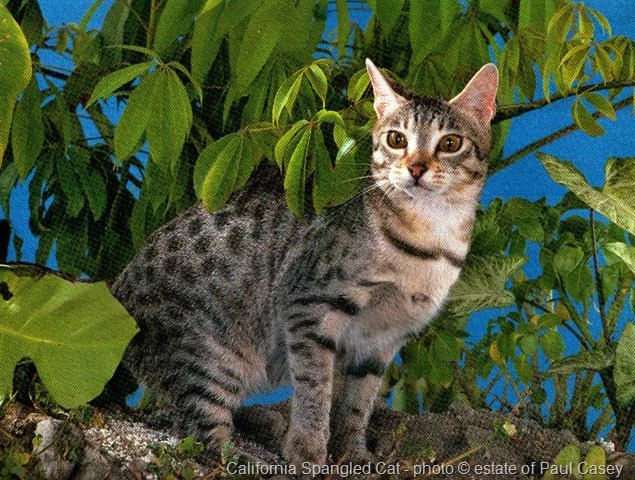
As a responsible pet owner, it is important to ensure that your California Spangled cat remains in good health throughout its life. One of the crucial steps in protecting your feline friend from common diseases is by following a proper vaccination schedule. Vaccinating your cat not only keeps them healthy, but it also provides numerous benefits for both you and your furry companion. In this section, we will explore the advantages of administering proper vaccinations to your beloved California Spangled cat.
Prevents the Risk of Infectious Diseases
Vaccinations play a crucial role in preventing infectious diseases in California Spangled Cats. By receiving the necessary vaccines, cats can build immunity against harmful viruses and bacteria that can cause fatal illnesses. Regular vaccinations can prevent the risk of infectious diseases such as feline panleukopenia, feline rhinotracheitis, feline calicivirus, chlamydiosis, rabies, feline leukemia virus (FeLV) and feline immunodeficiency virus (FIV), that can be lethal for cats.
Feline panleukopenia or feline distemper is a severe viral disease that can attack a cat’s digestive and immune systems. Symptoms include bloody diarrhea, vomiting, dehydration, and in some cases, death. Vaccination is the only effective way to protect cats against this deadly disease.
Feline rhinotracheitis (Feline Herpesvirus-1) causes a respiratory infection in cats that can lead to severe eye and nasal discharge, coughing, and fever. It can also lead to severe respiratory disease, which may cause death in kittens and elderly cats. Vaccination prevents them from developing the disease and helps them to recover faster if they get infected.
Feline calicivirus (FCV) causes respiratory and oral diseases in cats, leading to fever, ulcers, respiratory infections, and even pneumonia. It also weakens a cat’s immune system, making it vulnerable to other infections. Immunization against FCV is a fundamental preventive measure.
Chlamydiosis in cats is a bacterial infection that occurs frequently in multi-cat homes, kennels, or shelters. It causes conjunctivitis, pneumonia, and flu-like symptoms in cats. Vaccination is necessary to prevent this contagious infection.
Rabies is a viral lethal disease that can be transmitted from infected animals to cats and humans. Vaccination is compulsory by law to protect your cat from it, and it can also protect you and your family.
Feline leukemia virus (FeLV) is similar to HIV in humans. It weakens a cat’s immune system, leading to severe and often fatal illnesses such as cancer that may develop after a long incubation period. Vaccination helps them to develop immunity to this virus.
Feline immunodeficiency virus (FIV) weakens cats’ immune systems, causing chronic illness that can lead to other diseases, usually accompanied by weight loss, respiratory issues, and recurring infections. Vaccines keep cats immune and reduce the risk of the disease.
Vaccination is crucial in keeping cats healthy. It saves them from deadly diseases and helps to reduce medical costs in the long run. Regular vaccinations can prevent the risk of infectious diseases and protect cats from illnesses that can cause pain and distress.
Reduces the Spread of Diseases Among Cats
Proper vaccination schedules for California Spangled Cats not only protect the individual cat from potential health risks but also help reduce the spread of diseases among cats. When a cat is not vaccinated, it becomes susceptible to diseases that can be transmitted to other cats, increasing the risk of an epidemic. Vaccinating cats can break the chain of disease transmission and prevent the spread of infections from one cat to another.
One such example is the highly contagious Feline Calicivirus (FCV) that can cause respiratory infections and mouth ulcers. Unvaccinated cats can easily contract FCV from infected cats and spread it to others. Vaccinating cats against FCV can drastically reduce the chances of spread and contagion among feline populations.
Another example is Feline Leukemia Virus (FeLV), which is a virus that spreads through close contact with infected cats. An unvaccinated cat who comes into contact with an infected cat can easily contract the virus. However, vaccinated cats have a better chance of fighting the virus, and the risk of transmission reduces. This not only protects the vaccinated cat but also other cats in the community.
Vaccinations can help establish herd immunity. Herd immunity occurs when a significant number of cats in a community are vaccinated, which ultimately prevents epidemics from occurring. Even if a few cats are not vaccinated, the risk of spread is minimal because the vaccinated cats act like a barrier, protecting the entire community.
The proper vaccination of California Spangled Cats can not only protect them from various fatal diseases but also reduce the spread of infections among feline populations. By vaccinating cats, we can break the chain of transmission of diseases, establish herd immunity in the community, and keep our California Spangled Cats safe and healthy.
Prevents High Medical Costs in the Long Run
When it comes to pet ownership, it’s important to consider the long-term costs of maintaining their health. One of the benefits of proper vaccination schedules for California Spangled cats is that it can prevent high medical costs in the long run. Here are some ways how:
- Preventing the Need for Emergency Treatment: Vaccines can help prevent serious health issues that may require costly emergency treatments. For example, feline panleukopenia, also known as feline distemper, is a highly contagious and often fatal disease that requires extensive medical care. By vaccinating your cat, you can avoid the need for such expensive treatments.
- Reducing the Risk of Chronic Health Conditions: Vaccines can also reduce the risk of chronic health conditions that may require ongoing medical treatment. For example, feline leukemia virus (FeLV) and feline immunodeficiency virus (FIV) can weaken a cat’s immune system and make them more susceptible to other illnesses. By vaccinating your cat against these viruses, you can prevent the need for costly long-term treatments.
- Avoiding Legal Penalties: In some states, including California, it’s illegal to own an unvaccinated pet. If you’re caught with an unvaccinated cat, you may face legal penalties and fines.
By following a proper vaccination schedule for your California Spangled cat, you can avoid these long-term costs and maintain the health of your furry friend. It’s important to consult with a veterinarian to determine the best vaccination schedule for your cat’s specific needs.
When to Begin Vaccinating California Spangled Cats
One of the most important factors in preventing health issues in California Spangled cats is a proper vaccination schedule. As a responsible cat owner, it’s crucial to understand when to begin vaccinating your feline friend to ensure they live a long and healthy life. Proper vaccination not only protects your cat from harmful diseases but also helps to prevent the spread of diseases among other cats. In this section, we’ll discuss the recommended vaccination timeline for California Spangled cats, including when to administer the first vaccine, booster shots, and the schedule for adult cats.
First Vaccination
When it comes to vaccinating California Spangled Cats, the first vaccination is a crucial step in preventing a host of potential health issues. The initial vaccination should happen when the kitten is around 6-8 weeks old and has been weaned from its mother. This first vaccine is known as the FVRCP, which stands for feline viral rhinotracheitis (FVR), calicivirus (C), and panleukopenia (P).
The FVR vaccine provides protection against feline rhinotracheitis, which is a respiratory virus that affects the upper respiratory tract of cats. It’s highly contagious and can spread quickly among cats in crowded places like shelters or boarding facilities.
The Calicivirus vaccine protects against another highly contagious virus that affects the respiratory system of cats. Calicivirus can cause sneezing, fever, and mouth ulcers.
The Panleukopenia vaccine protects against feline panleukopenia, also known as feline distemper. This virus is highly contagious and can be deadly, especially in kittens. It attacks the immune system, leaving the cat vulnerable to further infections.
It’s crucial for cat owners to adhere to the vaccination schedule laid out by their veterinarian to ensure proper protection against these diseases. After the first vaccination, booster shots should be given every 3-4 weeks until the kitten is around 16 weeks old. These booster shots help to strengthen the kitten’s immunity and provide continued protection against potential health risks.
The first vaccination is a significant step in protecting California Spangled Cats against a range of infectious diseases. Adhering to a proper vaccination schedule can prevent potential health issues and save cat owners from costly medical bills in the long run.
Booster Shots
As mentioned earlier, booster shots are necessary to maintain immunity against the viruses and bacteria that pose a threat to California Spangled Cats. Booster shots work by stimulating the immune system to produce more antibodies, which will fight off any potential infections. It is important to note that booster shots should not be given too early or too late, as this can reduce their effectiveness.
The following are some of the key points to keep in mind regarding booster shots:
- Booster shots should be given on a regular schedule to ensure continued immunity.
- The frequency of booster shots depends on the type of vaccine administered and the cat’s age and health status.
- When in doubt, consult with a veterinarian to determine the optimal booster shot schedule for your California Spangled Cat.
- Missed booster shots can lead to reduced immunity, leaving your cat vulnerable to infections and diseases.
- Be sure to keep track of your cat’s vaccination record and schedule booster shots accordingly.
Booster shots are a critical component of your California Spangled Cat’s vaccination schedule. They serve as a crucial safeguard against the spread of infectious diseases and can prevent costly medical bills in the long run. By staying up-to-date on booster shots, you can ensure that your beloved feline friend stays healthy and happy for years to come.
Schedule for Adult Cats
Once an adult California Spangled cat has received their initial set of vaccinations, it is important to follow up with booster shots to ensure that their immunity remains strong. The typical schedule for adult cats includes regular booster shots every 1-3 years, depending on the specific vaccine and the cat’s lifestyle factors.
Core Vaccines:
- Rabies – booster shots every 1-3 years depending on local regulations and risk of exposure
- Feline Distemper (FVRCP) – booster shots every 1-3 years depending on specific vaccine brand and risk of exposure
Non-Core Vaccines:
- Feline Leukemia Virus (FeLV) – booster shots every 1-2 years for cats at high risk of exposure, such as those who spend time outdoors or live with FeLV-positive cats
- Feline Immunodeficiency Virus (FIV) – booster shots every 1-3 years for cats at high risk of exposure, such as those who regularly fight with other cats or have a history of outdoor living
It is important to note that not all adult cats will require booster shots for every non-core vaccine. The decision to vaccinate should be based on a risk-assessment performed by the cat’s veterinarian, who will take into account the cat’s lifestyle factors and exposure risk.
Regardless of the specific vaccines administered and their schedule, it is important for adult California Spangled cats to receive regular check-ups with their veterinarian to ensure their overall health and immunity. Regular wellness exams, along with appropriate vaccinations, can help keep adult cats protected and healthy for years to come.
Conclusion
In conclusion, it is clear that vaccination schedules play a crucial role in preventing health issues in California Spangled cats. The vaccines mentioned above are specifically formulated to protect cats from various infectious diseases that can cause serious health complications, and even death. By adhering to a regular vaccination schedule, cat owners can ensure that their pets remain healthy and happy for years to come.
It is important to note that vaccination alone is not a guaranteed protection from these diseases, but they do greatly reduce the risk of contracting them. It is also important to continue regular check-ups with a veterinarian to ensure that your cat’s health is in check.
Furthermore, appropriate vaccination schedules are beneficial for both the cat and the cat owner. By preventing the spread of diseases among cats, owners can avoid the risk of contracting potentially serious diseases from their pets. Additionally, the cost of treating a cat with a disease that could have been prevented through vaccination can be extremely high, both financially and emotionally.
In conclusion, cat owners should make sure that their cats receive the proper vaccinations at the appropriate time according to the recommendations of their veterinarian. This simple precaution can go a long way in ensuring the health and wellbeing of their beloved pets.
Frequently Asked Questions
1. Can California Spangled Cats be Vaccinated Against All Health Issues?
No, while vaccination can prevent many infectious diseases in California Spangled Cats, it cannot prevent all health issues.
2. Are Vaccines Safe for California Spangled Cats?
Yes, vaccines are generally considered safe for California Spangled Cats.
3. What Happens if You Don’t Vaccinate Your California Spangled Cat?
If you don’t vaccinate your California Spangled Cat, they are at risk of contracting serious and potentially life-threatening illnesses.
4. Can Vaccines Give My California Spangled Cat the Disease They are Vaccinated Against?
No, vaccines cannot give your California Spangled Cat the disease they are being vaccinated against because they only contain a small part of the virus or bacteria.
5. How Much Do Vaccinations Cost for California Spangled Cats?
The cost of vaccinations for California Spangled Cats can vary depending on the type of vaccine and your location. However, it is generally affordable.
6. Should I Vaccinate My Indoor California Spangled Cat?
Yes, even indoor California Spangled Cats should be vaccinated because diseases can still be brought in from outside sources such as on clothing or through contact with other cats.
7. Can California Spangled Cats Have An Allergic Reaction to Vaccines?
Yes, allergic reactions to vaccines can occur in California Spangled Cats, although they are very rare.
8. How Long Do Vaccines Last for California Spangled Cats?
The duration of protection provided by a vaccine can vary between diseases. But in general, vaccines for California Spangled Cats offer protection for several years.
9. Is It Possible to Over-Vaccinate My California Spangled Cat?
Yes, giving too many vaccinations to your California Spangled Cat can cause harm. However, following a recommended vaccination schedule is safe and effective.
10. Can I Administer Vaccinations to My California Spangled Cat at Home?
It is not recommended to administer vaccinations to your California Spangled Cat at home. Vaccinations should be administered by a trained veterinarian in a sterile environment to ensure efficacy and reduce the risk of adverse reactions.

